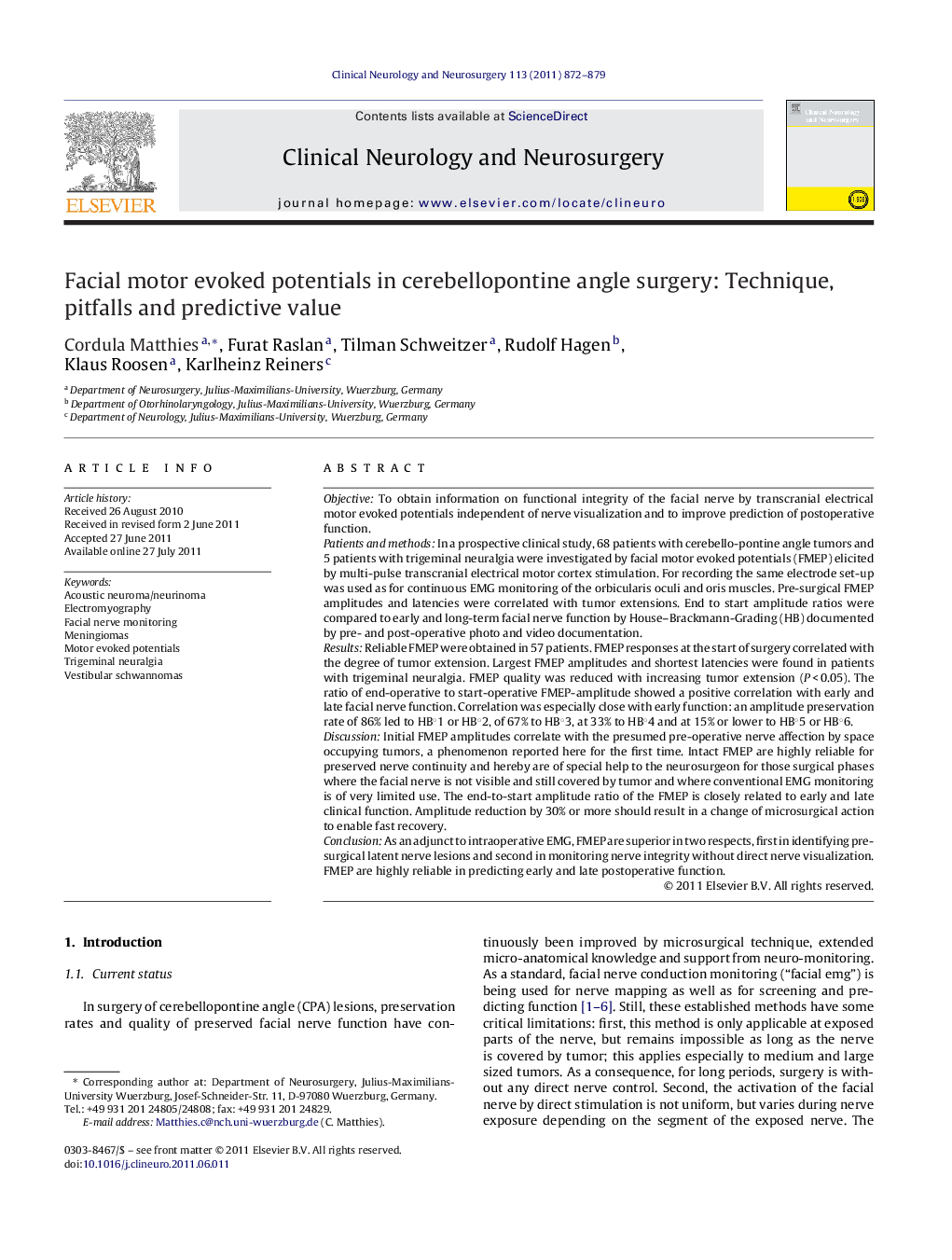| کد مقاله | کد نشریه | سال انتشار | مقاله انگلیسی | نسخه تمام متن |
|---|---|---|---|---|
| 3041081 | 1184760 | 2011 | 8 صفحه PDF | دانلود رایگان |

ObjectiveTo obtain information on functional integrity of the facial nerve by transcranial electrical motor evoked potentials independent of nerve visualization and to improve prediction of postoperative function.Patients and methodsIn a prospective clinical study, 68 patients with cerebello-pontine angle tumors and 5 patients with trigeminal neuralgia were investigated by facial motor evoked potentials (FMEP) elicited by multi-pulse transcranial electrical motor cortex stimulation. For recording the same electrode set-up was used as for continuous EMG monitoring of the orbicularis oculi and oris muscles. Pre-surgical FMEP amplitudes and latencies were correlated with tumor extensions. End to start amplitude ratios were compared to early and long-term facial nerve function by House–Brackmann-Grading (HB) documented by pre- and post-operative photo and video documentation.ResultsReliable FMEP were obtained in 57 patients. FMEP responses at the start of surgery correlated with the degree of tumor extension. Largest FMEP amplitudes and shortest latencies were found in patients with trigeminal neuralgia. FMEP quality was reduced with increasing tumor extension (P < 0.05). The ratio of end-operative to start-operative FMEP-amplitude showed a positive correlation with early and late facial nerve function. Correlation was especially close with early function: an amplitude preservation rate of 86% led to HB°1 or HB°2, of 67% to HB°3, at 33% to HB°4 and at 15% or lower to HB°5 or HB°6.DiscussionInitial FMEP amplitudes correlate with the presumed pre-operative nerve affection by space occupying tumors, a phenomenon reported here for the first time. Intact FMEP are highly reliable for preserved nerve continuity and hereby are of special help to the neurosurgeon for those surgical phases where the facial nerve is not visible and still covered by tumor and where conventional EMG monitoring is of very limited use. The end-to-start amplitude ratio of the FMEP is closely related to early and late clinical function. Amplitude reduction by 30% or more should result in a change of microsurgical action to enable fast recovery.ConclusionAs an adjunct to intraoperative EMG, FMEP are superior in two respects, first in identifying pre-surgical latent nerve lesions and second in monitoring nerve integrity without direct nerve visualization. FMEP are highly reliable in predicting early and late postoperative function.
Journal: Clinical Neurology and Neurosurgery - Volume 113, Issue 10, December 2011, Pages 872–879